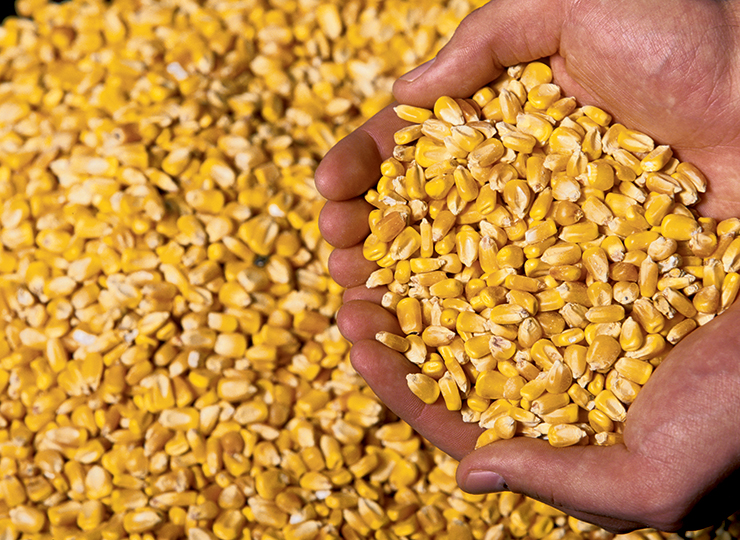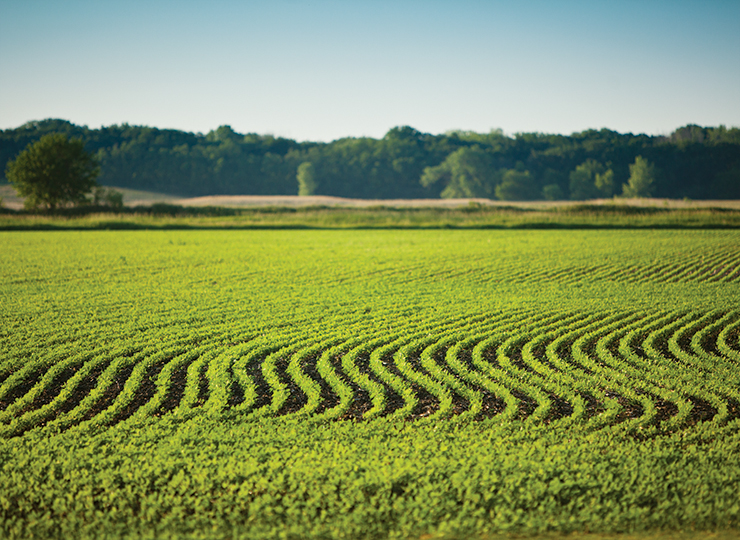Home > Missouri > Missouri Crops & Livestock > Rows of Opportunity: Missouri Leads in Corn and Soybeans
Rows of Opportunity: Missouri Leads in Corn and Soybeans

During a visit to just about any grocery store, it would be easier to pick out the products that don’t contain corn and soybeans than to make a long list of the ones that do. In even the largest supercenter, it would be tough to find an aisle without corn and soybean products.
That’s a positive thought to folks at the Missouri Corn Growers Association and the Missouri Soybean Association. However, that doesn’t mean the leaders of either organization are at ease; both see lots of room for their crops to grow.
One of the biggest areas for that growth – particularly in a river state like Missouri with ready access to those water-based transportation networks – is in exports.
“We think exports will grow as we see more developing countries have larger segments of their population move into what we see as their middle class,” says Dale Ludwig, executive director and CEO of the Missouri Soybean Association. “The first thing they do when they move into middle class is improve their diets, and they do that by adding meat. If you’re growing meat, poultry, swine, then you’re using soybeans.”
Corn producers hope for export growth in production, as well as ethanol and other products.
“I think corn production will go up,” says Gary Marshall, CEO of the Missouri Corn Growers Association, speaking to demand for the grain and value-added products like ethanol. “We don’t care where those markets develop. Asia. China. Indonesia. Wherever it is in the world, we want to pick up that business.”
Missouri farmers produce, on average, more than 350 million bushels of corn a year on 3 million acres, ranking Missouri 10th in the nation in corn production. The state’s farmers average 114 bushels of corn per acre.
Missouri’s soybean production set a record in 2009 with 231 million bushels. Missouri farmers also set a record in 2004 with an average of 45 bushels of soybeans per acre, ranking the state sixth in the country.
Those are great numbers, but not enough to have Marshall and Ludwig believing they’ve reached the peak. Both are confident that new and growing farm technologies will help Missouri farmers increase production even more in the future.
No Missouri farmer provides more heartening evidence of that possibility than Kip Cullers.
Cullers, who farms near the southern Missouri town of Stark City, has won prizes for growing records in both soybeans and corn in rotation on his land.
It’s his ability to grow soybeans that has attracted nationwide attention. Cullers holds the world record with 160.6 bushels per acre, nearly four times the national average. The record has made him a bit of a celebrity within the agriculture community and gained him, his crop, and his rural hometown notoriety. Cullers has been featured in Time and numerous other national magazines, as well as many statewide publications.

“What Kip has done is figure out how to increase the management level in growing soybeans,” Ludwig says. “He’s proven that when there are a number of people out there who claim that we’ve reached the yield barrier … that’s definitely not true.”
Ludwig says Cullers proves that many of the obstacles preventing higher yields were the result of environmental and management problems.
“He’s mitigated many of the environmental issues with better irrigation and better use of fungicides and insecticides,” Ludwig says.
Cullers also plants several fields with a total up to 100 varieties of corn and soybeans for research, something Ludwig says is rare among soybean farmers who often can’t spend the money, land or time.
Cullers differs a bit from many others growing commodity crops, however, as his early farming years were spent farming vegetables, which require an extreme level of management. Sometimes the difference of two days can mean a failed harvest. That attention to detail – carried over to his corn and soybeans – has helped Cullers spot problems and trends early and find solutions.
“If you’re around him, it’s interesting because he’s half comedian,” Ludwig says. “But he’s a smart guy. And he believes in doing research.”
Cullers’ brand of research bodes well for soybeans and corn, both Ludwig and Marshall say.
It also means that yield expectations are likely to continue being shattered by the man from Stark City well into the future.
After all, even with the thousands of other products produced by these two crops, one of the major goals of the industry is feeding more people through feed for livestock and other food-related products. Higher yields will help Missouri farmers be a big part of that.
“I prefer to think there’s a lot of opportunity out there,” Marshall says. “And we’re in the best position in the world to take advantage of the opportunities we’re going to have.”



